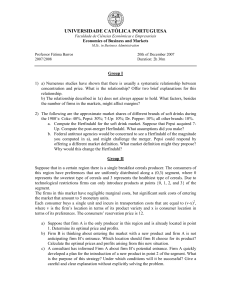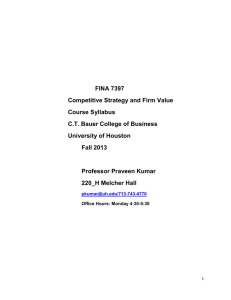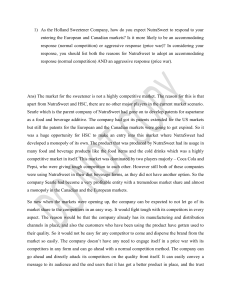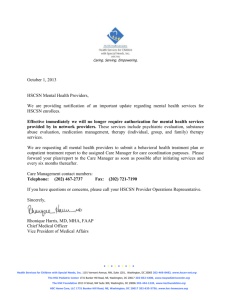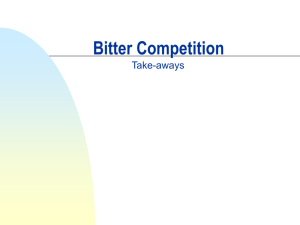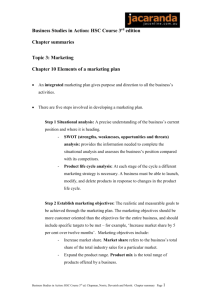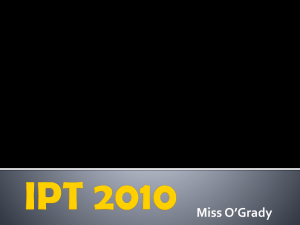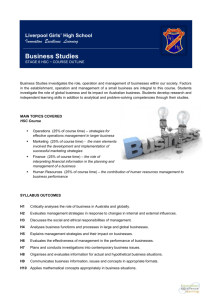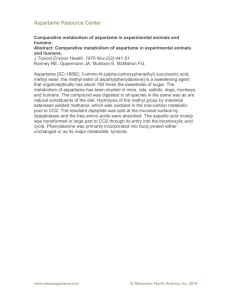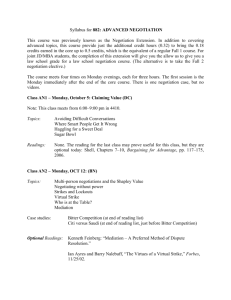Introduction NutraSweet vs Holland Sweetener Company G. D.
advertisement
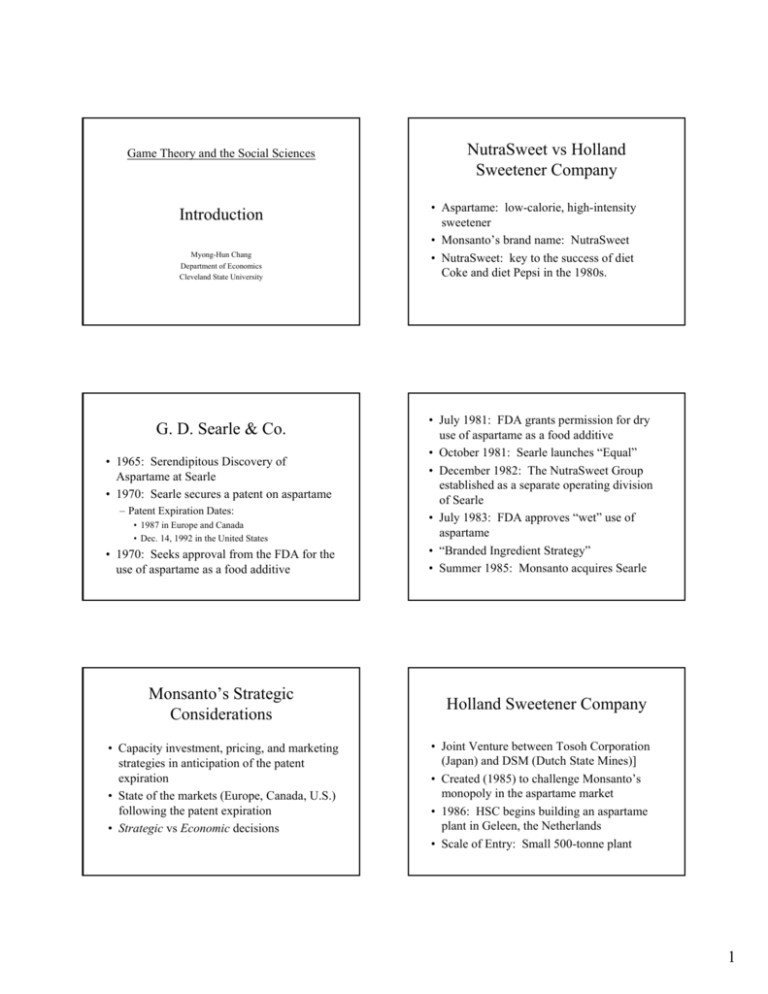
Game Theory and the Social Sciences Introduction Myong-Hun Chang Department of Economics Cleveland State University G. D. Searle & Co. • 1965: Serendipitous Discovery of Aspartame at Searle • 1970: Searle secures a patent on aspartame – Patent Expiration Dates: • 1987 in Europe and Canada • Dec. 14, 1992 in the United States • 1970: Seeks approval from the FDA for the use of aspartame as a food additive Monsanto’s Strategic Considerations • Capacity investment, pricing, and marketing strategies in anticipation of the patent expiration • State of the markets (Europe, Canada, U.S.) following the patent expiration • Strategic vs Economic decisions NutraSweet vs Holland Sweetener Company • Aspartame: low-calorie, high-intensity sweetener • Monsanto’s brand name: NutraSweet • NutraSweet: key to the success of diet Coke and diet Pepsi in the 1980s. • July 1981: FDA grants permission for dry use of aspartame as a food additive • October 1981: Searle launches “Equal” • December 1982: The NutraSweet Group established as a separate operating division of Searle • July 1983: FDA approves “wet” use of aspartame • “Branded Ingredient Strategy” • Summer 1985: Monsanto acquires Searle Holland Sweetener Company • Joint Venture between Tosoh Corporation (Japan) and DSM (Dutch State Mines)] • Created (1985) to challenge Monsanto’s monopoly in the aspartame market • 1986: HSC begins building an aspartame plant in Geleen, the Netherlands • Scale of Entry: Small 500-tonne plant 1 HSC’s Strategic Considerations • Expectation of the Post-Entry Market • Two Scenarios – “Normal Competition” – “Price War” HSC’s Conclusion • Enter the European market at small scale – Brand name Sanecta • NutraSweet unlikely to engage in price warfare • Strategic vs Economic Considerations Post-Entry Price Competition • 1987: NutraSweet’s European patent expires • Holland Sweetener attacks the European market • Monsanto fights back (aggressive pricing) • NutraSweet’s Exclusive Contracts with Coke and Pepsi • Huge Loss for HSC • HSC’s appeal to the European courts • HSC survives in Europe – Pre-entry price: $70 per pound – Post-entry price: $22 - $30 per pound U.S. Market • Patent expiration expected in 1992 • Jan. 1992: HSC announces a plan to increase the annual capacity of its Geleen plant Monsanto’s Incumbent Advantage • Branding: Huge investments in creating the brand identity • Advertising: Estimated at $30 million annually • Cost Advantage: NutraSweet at a much lower point on the learning curve than HSC 2 Monsanto’s Deterrence Strategy • New long-term contract with Coke and Pepsi • Late 1989: NutraSweet announces a plan to double the annual capacity of its Augusta plant. The new capacity to come on stream in 1991. • Sept. 1991: NutraSweet announces a plan to build a plant in France (to come on stream in JulyAugust 1993. • Feb. 1992: NutraSweet launches a $10 million advertising campaign for Equal • HSC’s Pre-Entry Considerations in 1986 – NutraSweet’s Reaction to HSC’s Entry in Europe Game-Theoretic Issues • Who are the relevant players in this game? • What were the options open to these players? • What were the players’ time frame for their strategic planning? • Long-term goal vs quick short-run profits Game Theory • Live-and-let-live Accomodation? • Aggressive Price War? • Science of Rational Behavior in Interactive Situations • Post-Entry Market Reality in Europe – Does not guarantee winning – Does provide general principles for thinking about strategic interactions – NutraSweet engaged in a price war – What was NutraSweet up to? • Deterrence in preparation for U.S. Competition? • Bluff? • Credibility? Examples • • • • • • Tennis and Mixing Shots (mixed strategy) GPA trap (prisoner’s dilemma) Flat Tire (backward induction/coordination) Mean Professors (commitment) Roommates (brinkmanship/war of attrition) Dating Game (manipulating information) How to Use the Examples? • Case Study Approach – Parallels between the examples and the real-life problems – Drawback? • Analytical Approach – Constructs a theory of strategic action – Drawback? – Advantage? 3 Game Theory and Strategic Behavior Main Lessons • Taxonomy Matters – Recognize the type of game you are in • Equilibrium Matters • “Games offer a classification of different strategic situations and way to incorporate and ‘audit’ many relevant elements (players, payoffs, timing, information).” – Colin Camerer (private correspondence) – Know what types of outcomes are logically possible in the game you are playing • Change the Rules – Manipulate the game structure to turn the projected outcome in your favor • Institutions Matter – Know which rules you can/cannot change • “Everything in strategy is very simple, but that does not mean that everything is very easy.” --- On War, Carl Von Clausewitz • “Things should be made as simple as possible, but not any simpler.” --- Albert Einstein 4
